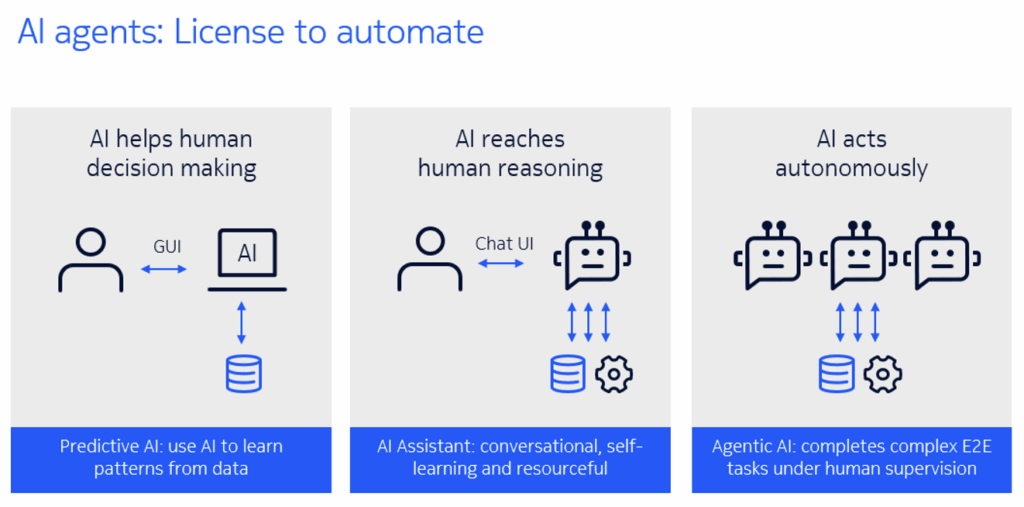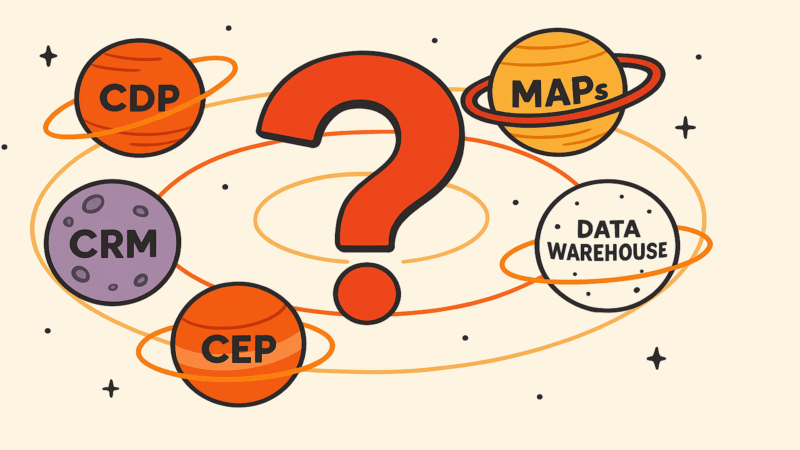#data-quality
#data-quality
[ follow ]
#ai #artificial-intelligence #machine-learning #data-management #large-language-models #crm #ai-adoption
fromArs Technica
1 week agoResearchers show that training on "junk data" can lead to LLM "brain rot"
On the surface, it seems obvious that training an LLM with "high quality" data will lead to better performance than feeding it any old "low quality" junk you can find. Now, a group of researchers is attempting to quantify just how much this kind of low quality data can cause an LLM to experience effects akin to human "brain rot."
Artificial intelligence
fromWhat's Trending
1 week agoThe Hidden Cost of Stale CRM Data (and How to Fix It with Automation)
Your sales rep finally reaches out to a "hot lead" that marketing flagged weeks ago, only to discover that the contact no longer works there. Or worse, the company has merged, and your CRM still lists them under an outdated domain. It's frustrating, time-wasting, and surprisingly common. CRM systems are supposed to be the single source of truth for customer relationships. Yet, for many businesses, that "truth" becomes outdated faster than they realize.
Marketing tech
fromTelecompetitor
4 weeks agoThe Road to AI Profitability is Bumpy: Report
Almost half of respondents to Ocient's "From Roadmap to Reality" report say that their companies have not experienced meaningful revenue growth from artificial intelligence (AI) investments due to "poor data quality and overtaxed infrastructures." The data analytics firm further found that "security and compliance pressures" are "shaping enterprise deployment strategies that prioritize flexibility and cost savings, driving movement away from the cloud."
Artificial intelligence
fromMarTech
1 month agoHow to get your organization aligned for the AI age | MarTech
Over 40 minutes, the panel returned again and again to three themes: data quality, organizational alignment and cultural readiness. The consensus was clear: AI doesn't create order from chaos. If organizations don't evolve their culture and their standards, AI will accelerate dysfunction, not fix it. Clean data isn't optional anymore Allen set the tone from the executive perspective. He argued that enterprises must build alignment on high-quality, structured and standardized data within teams and across workflows, applications and departments.
Marketing
Privacy professionals
fromLondon Business News | Londonlovesbusiness.com
1 month agoHow London SMEs turn customer data into smarter growth in 2025 - London Business News | Londonlovesbusiness.com
Reliable, validated first-party client data and lightweight data-quality tooling are essential foundations for SMEs to scale, comply, and enable analytics/AI safely.
Software development
fromBerlin Startup Jobs
1 month agoJob Vacancy: Senior Data Engineer // GLS NXT | IT / Software Development Jobs | Berlin Startup Jobs
Senior Data Engineer responsible for designing, building, monitoring, and scaling reliable data pipelines and warehouses while ensuring data quality, models, and documentation across AWS/GCP.
fromGrocery Dive
1 month agoThe hidden risk that could sink retail media's $176.9B promise
Retail media promises billions in new revenue, but for grocers, the real test is whether their data can deliver. By 2025, RMN revenue is projected to hit $176.9 billion globally, overtaking combined TV and streaming revenues and accounting for 15.9% of total ad spend ( GroupM, This Year Next Year 2024 ). For grocery retailers running on razor-thin margins, this feels like salvation.
Marketing
fromFortune
1 month agoOne of the most common reasons that AI products fail? Bad data | Fortune
"What we had noticed was there was an underlying problem with our data," Ahuja said. When her team investigated what had happened, they found that Salesforce had published contradictory "knowledge articles" on its website."It wasn't actually the agent. It was the agent that helped us identify a problem that always existed," Ahuja said. "We turned it into an auditor agent that actually checked our content across our public site for anomalies. Once we'd cleaned up our underlying data, we pointed it back out, and it's been functional."
Artificial intelligence
EU data protection
fromExchangewire
1 month agoAxeptio & TAGGRS Partner to Help Marketers Regain Control of their Data
Axeptio and TAGGRS partnered to deliver EU-compliant, high-performance server-side tracking that restores marketers' data quality and control amid browser restrictions and ad blockers.
fromTheregister
1 month agoUS government lacks clarity into its infosec workforce
The Government Accountability Office (GAO) said that data it reviewed from 23 key US government agencies (out of 24, as the Pentagon was excluded from this report) indicated there were at least 63,934 full-time federal cybersecurity employees, costing the government around $9.3 billion per year. An additional 4,151 contractors were reported to the GAO, and those cost taxpayers an additional $5.2 billion.
Information security
Artificial intelligence
fromBusiness Matters
1 month agoUK AI investment hits record 2.9bn as Britain strengthens global leadership
UK AI investment reached a record £2.9 billion, placing the UK second globally and prompting government support, an AI assurance roadmap, and industry-focused growth measures.
fromwww.npr.org
7 years agoThe School Shootings That Weren't
We were able to confirm just 11 reported incidents, either directly with schools or through media reports. In 161 cases, schools or districts attested that no incident took place or couldn't confirm one. In at least four cases, we found, something did happen, but it didn't meet the government's parameters for a shooting. About a quarter of schools didn't respond to our inquiries.
Education
fromLitmus
3 months ago2025 State of Email Crossover Recap: Breaking Down our Latest Report
Email marketers face numerous challenges in 2025, including low engagement rates, data quality issues, accurately measuring ROI, and personalization. Experts highlight the need for collaboration across departments to overcome these obstacles.
E-Commerce
fromFortune
2 months agoData quality at risk as federal workforce shrinks, says top economist
Government workers have important jobs that are critical to providing important services to taxpayers. If jobs are cut and those services aren't provided or aren't provided in a timely and competent way, there can be significant negative fallout.
US politics
fromFlowingData
3 months agoFederal data more at risk, a report from American Statistical Association
The year two status report stresses how the situation is worsening. Declining budgets, staffing constraints, and inadequate statistical integrity protections identified in the 2024 report have intensified in recent months.
US politics
fromTechCrunch
3 months agoiMerit believes better quality data, not more data, is the future of AI | TechCrunch
What's become exceedingly important is the ability to attract and retain the best cognitive experts... to take these large models and make them very customized towards solving enterprise AI problems.
Tech industry
fromTechCrunch
3 months agoAI is forcing the data industry to consolidate - but that's not the whole story | TechCrunch
There is a complete reset in how data is managed and flows around the enterprise. If people want to seize the AI imperative, they have to redo their data platforms in a very big way. And this is where I believe you're seeing all these data acquisitions, because this is the foundation to have a sound AI strategy.
Data science
fromHackernoon
10 months agoLimitations of Current Biomedical Text Mining Community Challenges | HackerNoon
The evaluation tasks within the biomedical text mining community face significant limitations, particularly regarding data representativeness, quality, and participant innovation in solution development.
Online Community Development
Marketing tech
fromSearch Engine Roundtable
6 months agoGoogle Analytics Makes Updates To Campaign Data Quality & Attribution Reporting (Data not available)
Google Analytics has updated its attribution reporting to enhance data quality and minimize misattribution issues.
A new label '(data not available)' will identify missing data in reports.
fromHackernoon
10 months agoScientists Built a Smarter, Sharper Materials Graph by Teaching AI to Double-Check Its Work | HackerNoon
In our research, we successfully designed a functional material KG by employing fine-tuned large language models (LLMs), assuring traceability throughout the information process.
Media industry
Scala
frommedium.com
6 months agoSpark Scala Exercise 24: Error Handling and Logging in SparkBuild Safe, Auditable ETL Pipelines
Build a defensive Spark ETL pipeline to ensure robust data processing.
Handle data issues like schema mismatches and corrupt records effectively.
Implement custom logging and audit trails for better failure management.
[ Load more ]



















